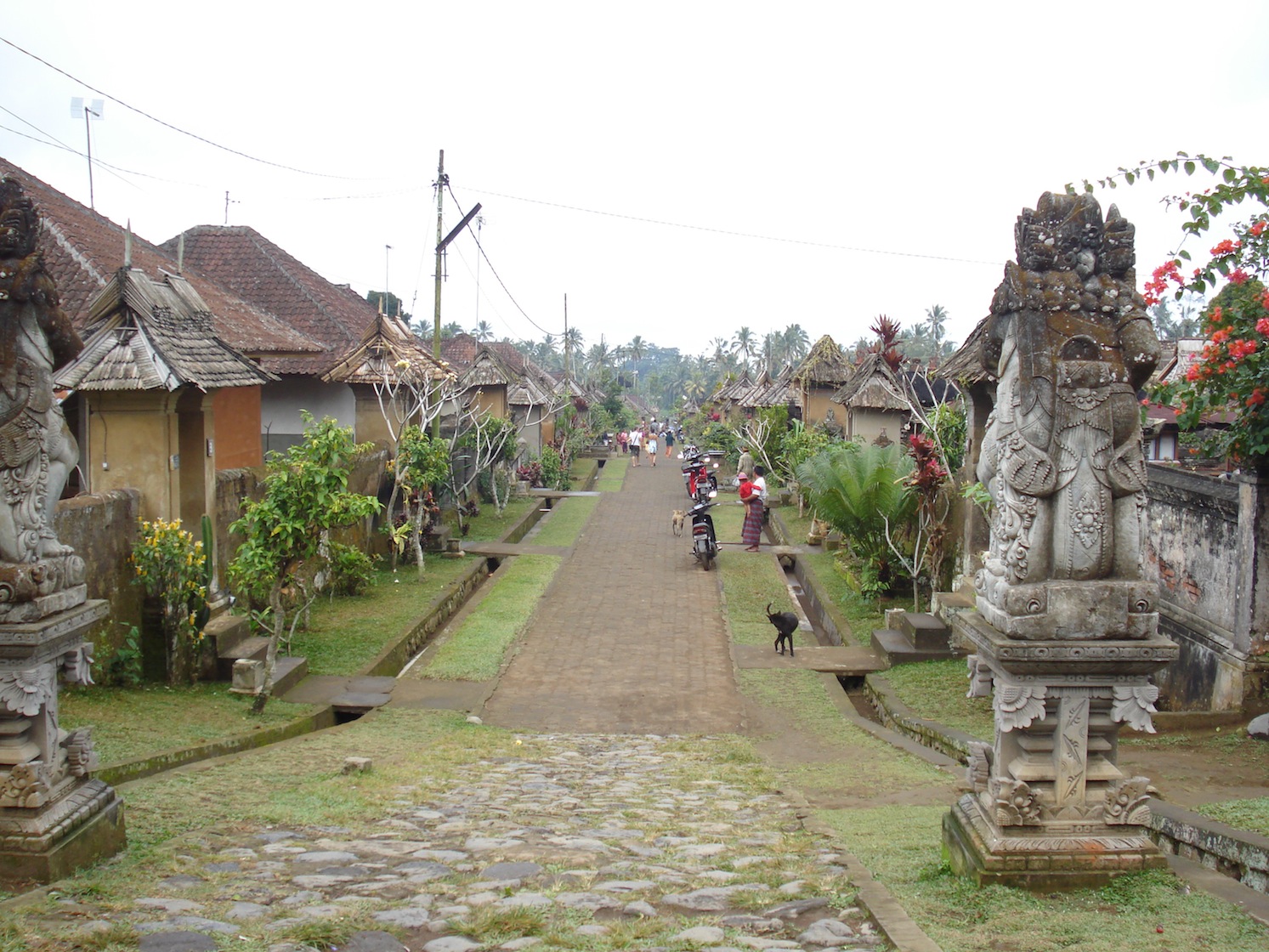Balinese House Compund
Traditional Bali house consists of a group of buildings constructed within a walled area and Balinese gateways. It is built according to a set plan given in detail by the “Hasta Bumi” lontar scrolls (Hasta Bumi Lontar is one of the many books of Balinese traditional knowledge. The word “lontar” means dried palm leaf and is reference to the time when all writing was done on these palm leaves).

These lontar scrolls not only indicate the placement, but also the function of each building and further explained in the “Tri Hit Karaka” which divides the land into three levels: main (tame), middle (mayday), and low (nits).
In the ‘utama’ or main area of a Balinese house there lays a ‘sanggah’, or temple placed within a house or garden, to worship the spirits of the ancestors. In the ‘madya’ or middle area there are four main buildings: Bale Dangin, Bale Dauh, Bale Daja, and Paon. These four buildings face one another.
The ‘Bale Dangin’ (or BaleAdat) functions as a place to hold religions ceremonies (tooth filling or wedding ceremonies). The Bale Dangin directly faces the Bale Dauh and is bordered by a garden called ‘natah’. In the past, the Bale Dauh was built as an open space with six pillars or ‘saka’ and one bedroom. However, recently there have been many architectural changes leading to a variety of structures. The Bale Dauh of today contains several rooms, which is due to the population in crease on the island.
The ‘Bale Daja’ is located next to the Bale Dangin to the north. It functions as a bedroom for elderly members of the family, such as the grandparents. The Bale Daja faces the kitchen or ‘paon’.
The kitchen is located in the south area of the housing compound and is generally very large and contains a clay hearth used for cooking. The building procedure for a traditional Balinese home is contained in the Asta Kosala Kosali lontar. This lontar also provide the guidelines for determining the use and placement of construction material as well as the selection of best days to perform the construction.
A series of ceremonies are conducted throughout the building process, including prior to and after the construction.
Traditional Balinese houses can be found in rural areas. If you would like to see the architecture form of these houses, villages in Bali’s interior are still built in this manner. Most villagers would be more than happy to share their culture with you. Interested to explore deep into, book Ubud Bali Tour our tour guide will be happy to share an information about Bali traditional house, architecture and way of life. The other options are rent car self drive, so you can arrange your time and trip as you wish. We provide a wide range of rent car self drive fleet in good price. Rent car in Bali with driver also availabe and our driver is local Balinese and surely be happy to drive to your destination well.














